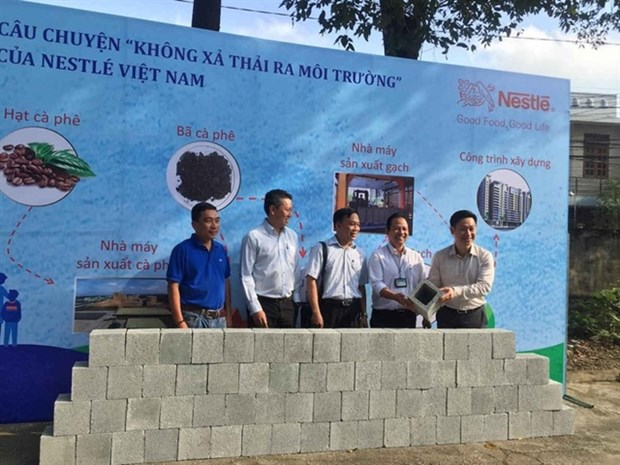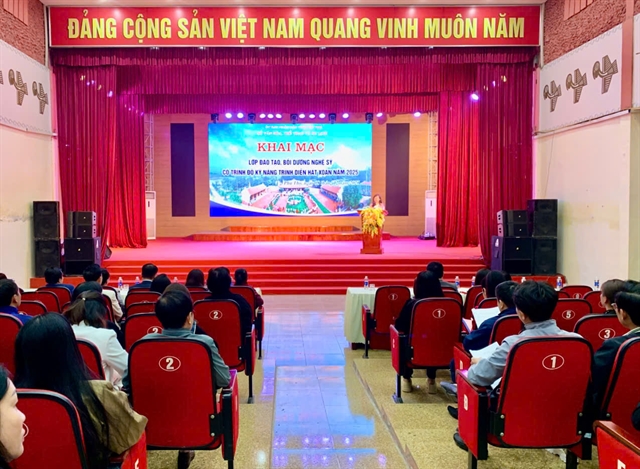 Economy
Economy

 |
| Nestlé Vietnam donates 10,000 bricks made of coffee grounds to a school in southern Đồng Nai Province. The circular economy enables the company to make every kilo of coffee grounds count. — Photo suckhoedoisong.vn |
BRUSSELS — Việt Nam get inspiration from the European Circular Economy Stakeholder Platform (ECESP) to learn from European initiatives and experiences in recent years, said ECESP Vice President Cillian Lohan.
By taking the ECESP as a model, Việt Nam can also set up relations with the parties to the platform to support the development of its circular economy, Lohan told the Vietnam News Agency on the sidelines of the annual ECESP conference recently held in Brussels.
According to the recent Circularity Gap Report, the world consumes about 110 billion tonnes of materials each year and wastes over 90 per cent, while only 7.2 per cent is circular.
Arnaud Schwartz, head of the European Economic and Social Committee (EESC) Sustainable Development Observatory, said circular economic activities aren't popular, but they are being promoted to become the main trend of the future economy. The circular economy is an environmentally friendly one in which natural resources are renewable, metal resources sustainable, and overexploitation is avoided.
To do that, it is necessary to produce goods from durable and repairable materials that can be used for a long time before they are recycled, he noted.
Launched in March 2017 as a joint initiative of the European Commission and the EESC, the ECESP has developed strongly and served as a model of reference for enterprises. It gathers a number of climate and sustainable development initiatives helping members achieve all the Sustainable Development Goals. — VNS




